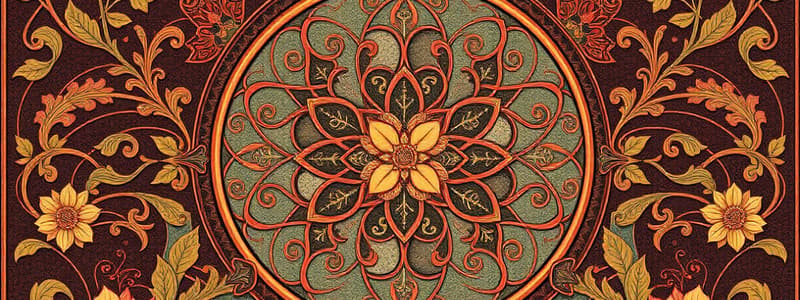Podcast
Questions and Answers
Which of the following fractions is equivalent to $\frac{4}{8}$?
Which of the following fractions is equivalent to $\frac{4}{8}$?
- $\frac{3}{6}$
- $\frac{5}{10}$ (correct)
- $\frac{2}{3}$
- $\frac{1}{2}$ (correct)
When comparing the fractions $\frac{3}{5}$ and $\frac{7}{10}$, which symbol would represent their relationship?
When comparing the fractions $\frac{3}{5}$ and $\frac{7}{10}$, which symbol would represent their relationship?
- =
- <=
- > (correct)
- <
What is the least common multiple (LCM) of 6 and 8?
What is the least common multiple (LCM) of 6 and 8?
- 24 (correct)
- 48
- 18
- 12
Which fraction is in simplest form?
Which fraction is in simplest form?
If you have the number 30, which of the following is not a factor of 30?
If you have the number 30, which of the following is not a factor of 30?
Flashcards
Dissimilar Fractions
Dissimilar Fractions
Fractions with different denominators that cannot be directly compared or added without conversion.
Equivalent Fractions
Equivalent Fractions
Fractions that represent the same value, even if they have different numerators and denominators.
Multiples
Multiples
The result of multiplying a number by an integer, important for finding common denominators or factors.
Simplest Form of Fractions
Simplest Form of Fractions
Signup and view all the flashcards
Comparing Dissimilar Fractions
Comparing Dissimilar Fractions
Signup and view all the flashcards
Study Notes
3RD QUARTER EXAMINATION IN MATH POINTERS TO REVIEW
1. Dissimilar fractions, with denominators up to 10, using models.
2. Equivalent fractions using models.
3. Multiples of given numbers up to 100.
4. Multiples in finding equivalent fractions.
5. Factors of a given number up to 100.
6. Reduce fractions to simplest form.
7. Compare dissimilar fractions using the symbols =, >, and <.
8. Order dissimilar fractions from smallest to largest, and vice versa.
9. Add dissimilar fractions using models.
10. Add dissimilar fractions:
10.1. two proper fractions,
10.2. two mixed numbers, and
10.3. a mixed number and a proper fraction.
11. Solve word problems involving the addition of dissimilar fractions.
12. Subtract dissimilar fractions using models.
13. Subtract dissimilar fractions:
13.1. two proper fractions,
13.2. two mixed numbers,
13.3. a mixed number and a proper fraction,
13.4. a whole number and a proper fraction, and
13.5. a whole number and a mixed number.
14. Symmetry with respect to a line.
15. Figure that is symmetric with respect to a line.
16. Image of an object after applying reflection with respect to a line, including glide reflection.
Studying That Suits You
Use AI to generate personalized quizzes and flashcards to suit your learning preferences.



